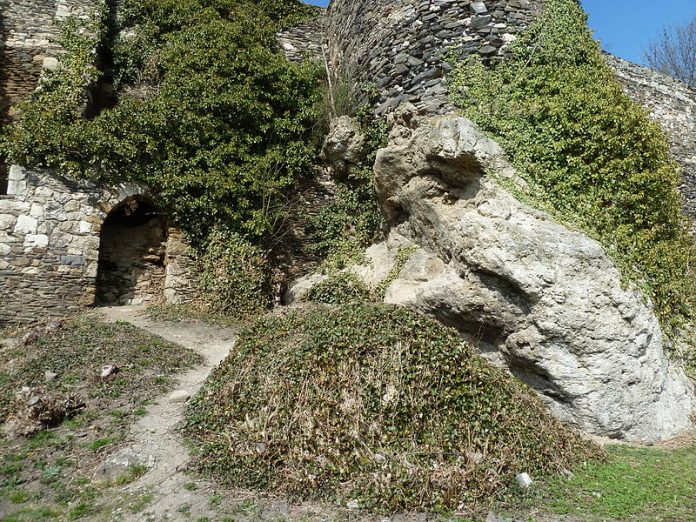Homo sapiens eða nútímamaðurinn þróaðist fyrir um 200,000 árum síðan í Austur-Afríku nálægt Eþíópíu nútímans. Þau bjuggu lengi í Afríku. Fyrir um 55,000 árum síðan dreifðust þeir til mismunandi heimshluta, þar á meðal til Evrasíu, og héldu áfram að drottna yfir heiminum á sínum tíma.
The oldest evidence of human existence in Evrópa fannst í Bacho Kiro hellirinn, Búlgaría. Mannvistarleifarnar á þessum stað voru dagsettar til að vera 47,000 ára gamlar sem gefur til kynna H. sapiens hafði náð til Austur-Evrópu um 47,000 árum áður.
Evrasía hafði hins vegar verið land neanderdalsmanna (homo neanderthalensis), an extinct species of ancient humans who lived in Evrópa and Asia between 400,000 years before present to about 40,000 years before present. They were good tool maker and hunter. H. sapiens did not evolve from neanderthals. Instead, both were close relatives. As shown in fossil records, neanderthals differed markedly from Homo sapiens anatomically in the skull, ear bones and pelvis. The former were shorter in height, had stockier bodies and had heavy brows and big noses. Therefore, based on significant differences in physical traits, neanderthals and homo sapiens are traditionally considered to be two distinct species. Nevertheless, H. neanderthalensis og H. sapiens interbred outside Africa when the later met neanderthals in Eurasia after leaving Africa. The present human populations whose ancestors had lived outside Africa have about 2% neanderthal DNA in their genome. Neanderthal ancestry is found in modern African populations as well perhaps because of migration of Evrópubúar into Africa over the past 20,000 years.
The co-existence of neanderthals and H. sapiens in the Evrópa has been debated. Some thought that the neanderthals disappeared from northwestern Evrópa before the arrival of H. sapiens. Based on the study of stone tools and fragments of skeletal remains at the site, it was not possible to determine whether specific excavated levels at archaeological sites are associated with Neanderthals or H. sapiens. After reaching Evrópa, did H. sapiens búa við hlið (neanderdalsmenn) áður en neanderdalsmenn stóðu frammi fyrir útrýmingu?
Lincombian–Ranisian–Jerzmanowician (LRJ) steinverkfæraiðnaður á fornleifasvæðinu við Ilsenhöhle í Ranis í Þýskalandi er áhugavert mál. Ekki var hægt að sanna með óyggjandi hætti hvort þessi síða tengist neanderdalsmönnum eða H. sapiens.
In studies published recently, researchers extracted the fornt DNA from the skeletal fragments from this site and upon mitochondrial DNA analysis and direct radiocarbon dating of the remains found that remains belonged to modern human population and were about 45,000 years old which makes it the earliest H. sapiens remains in Northern Evrópa.
The studies showed that Homo sapiens were present in central and northwestern Evrópa long before extinction of Neanderthals in southwestern Evrópa and indicated that both species coexisted in Europe during the transitional period for about 15,000 years. H. sapiens at LRJ were small pioneer groups who were connected to wider populations of H. sapiens in eastern and central Europe.It was also found that around 45,000-43,000 years ago, cold climate prevailed across the sites at Ilsenhöhle and had a cold steppe setting. Directly dated human bones at the site suggest that H. sapiens could use the site and operate thus showing ability to adapt to the prevailing severe cold conditions.
The studies are significant because it identifies an early spread of H. sapiens into cold steppes in northern Evrópa 45,000 years ago. The humans could adapt to the extreme cold conditions and operate as small mobile groups of pioneers.
***
Tilvísanir:
- Mylopotamitaki, D., Weiss, M., Fewlass, H. et al. Homo sapiens náði hærri breiddargráðum Evrópu fyrir 45,000 árum. Náttúra 626, 341–346 (2024). https://doi.org/10.1038/s41586-023-06923-7
- Pederzani, S., Britton, K., Trost, M. et al. Stöðugar samsætur sýna Homo sapiens dreift í kaldar steppur fyrir ~45,000 árum í Ilsenhöhle í Ranis í Þýskalandi. Nat Ecol Evol (2024). https://doi.org/10.1038/s41559-023-02318-z
- Smith, GM, Ruebens, K., Zavala, EI et al. Vistfræði, lífsviðurværi og mataræði ~45,000 ára Homo sapiens í Ilsenhöhle í Ranis í Þýskalandi. Nat Ecol Evol (2024). https://doi.org/10.1038/s41559-023-02303-6
***






































